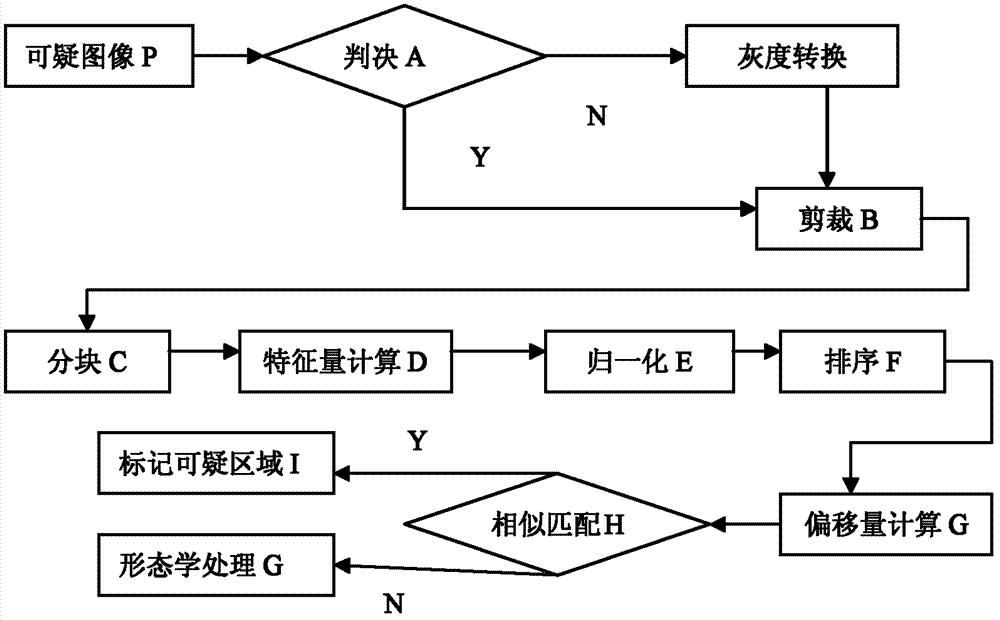Texture-characteristic-based method for passively and blindly obtaining evidence of digital image
A texture feature and digital image technology, applied in the field of passive blind forensics, can solve problems such as large amount of calculation, inability to quickly obtain images, poor robustness, etc., and achieve the effect of enhancing robustness
- Summary
- Abstract
- Description
- Claims
- Application Information
AI Technical Summary
Problems solved by technology
Method used
Image
Examples
Embodiment 1
[0045] In this embodiment, digital image passive blind forensics technology is used to obtain evidence for the authenticity of suspicious images. figure 1 A schematic diagram of the flow principle of the method for passive blind forensics based on texture features of the present invention is given. Refer now figure 1 The specific operation process of the method for passive blind forensics of images based on texture features in this embodiment is introduced as follows:
[0046] First perform texture feature extraction:
[0047] Step 1. Judgment step A: perform grayscale judgment on the suspicious image P to be detected, if the image to be detected is a non-grayscale image, convert the image P to be detected into a grayscale image;
[0048] The second step, cropping step B, crop the texture part of the image to be detected after the judgment, and discard the edge parts that are less than half of the block window after the cropping;
[0049] The third step, block step C, overlap and bl...
PUM
 Login to View More
Login to View More Abstract
Description
Claims
Application Information
 Login to View More
Login to View More - R&D
- Intellectual Property
- Life Sciences
- Materials
- Tech Scout
- Unparalleled Data Quality
- Higher Quality Content
- 60% Fewer Hallucinations
Browse by: Latest US Patents, China's latest patents, Technical Efficacy Thesaurus, Application Domain, Technology Topic, Popular Technical Reports.
© 2025 PatSnap. All rights reserved.Legal|Privacy policy|Modern Slavery Act Transparency Statement|Sitemap|About US| Contact US: help@patsnap.com



